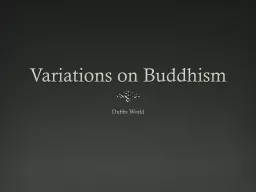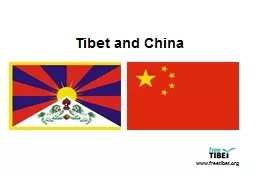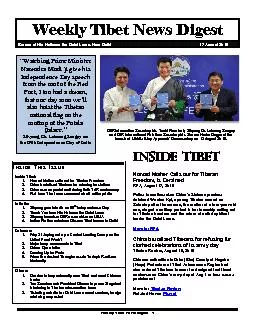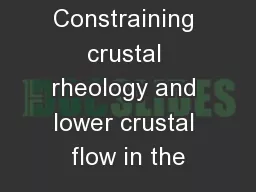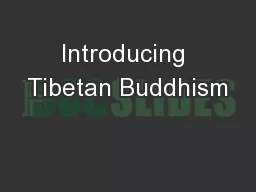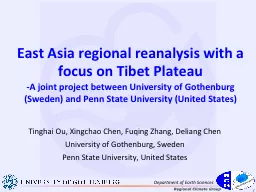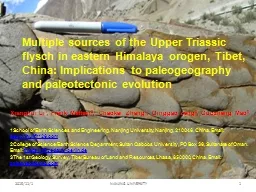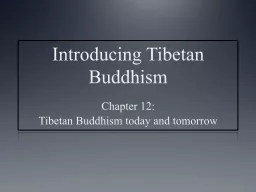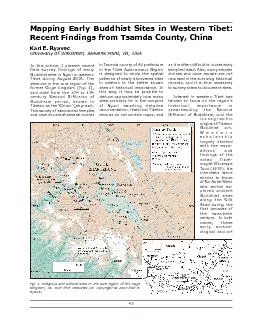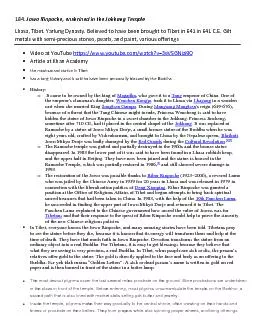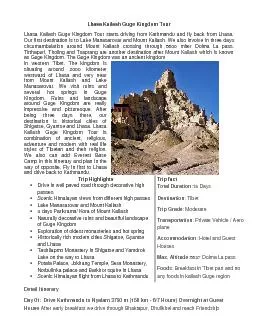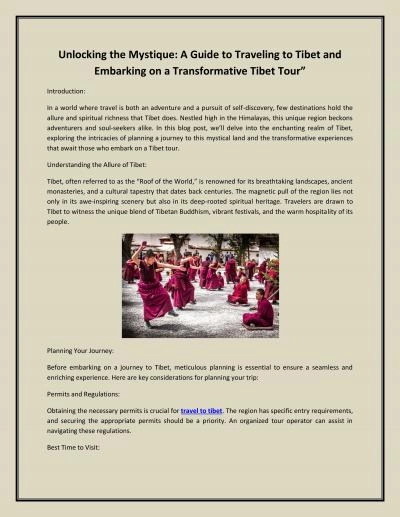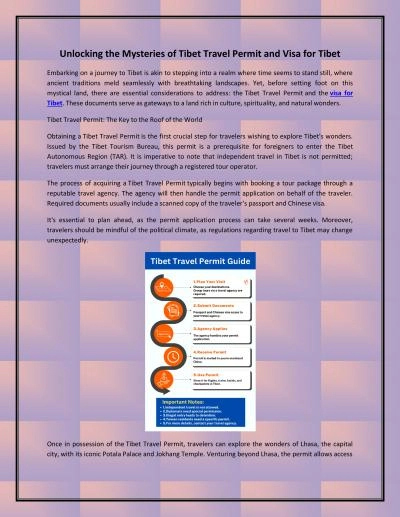PPT-www.freetibet.org Tibet and China
Author : shoffer | Published Date : 2020-08-28
Where is Tibet TIBET Tibet geography U nder the Peoples Republic of China Tibets three provinces UTsang Amdo and Kham are now divided among four Chinese
Presentation Embed Code
Download Presentation
Download Presentation The PPT/PDF document "www.freetibet.org Tibet and China" is the property of its rightful owner. Permission is granted to download and print the materials on this website for personal, non-commercial use only, and to display it on your personal computer provided you do not modify the materials and that you retain all copyright notices contained in the materials. By downloading content from our website, you accept the terms of this agreement.
www.freetibet.org Tibet and China: Transcript
Download Rules Of Document
"www.freetibet.org Tibet and China"The content belongs to its owner. You may download and print it for personal use, without modification, and keep all copyright notices. By downloading, you agree to these terms.
Related Documents


